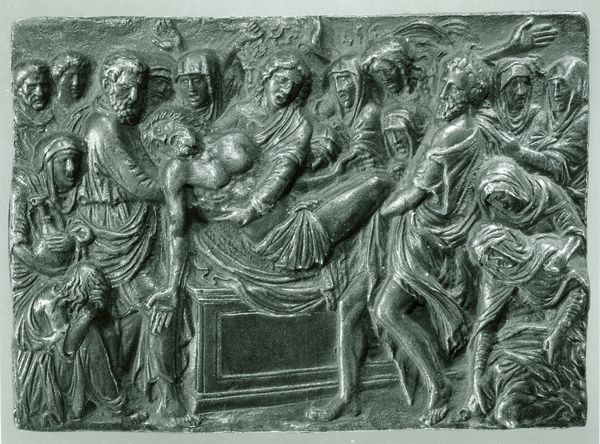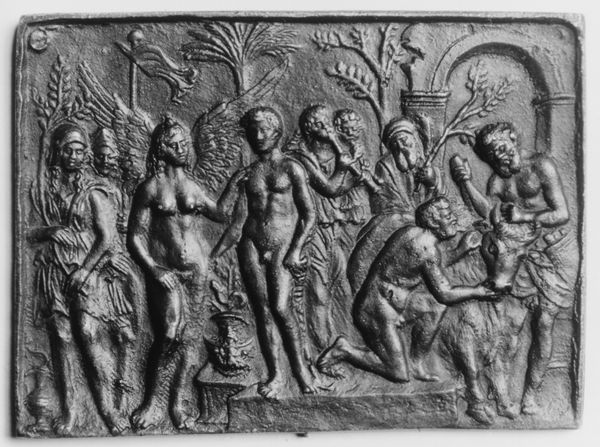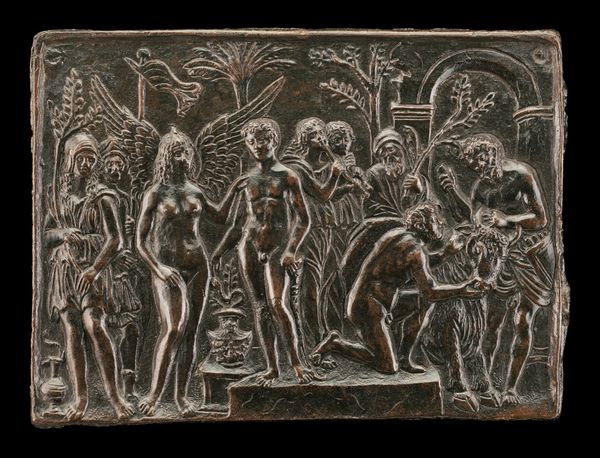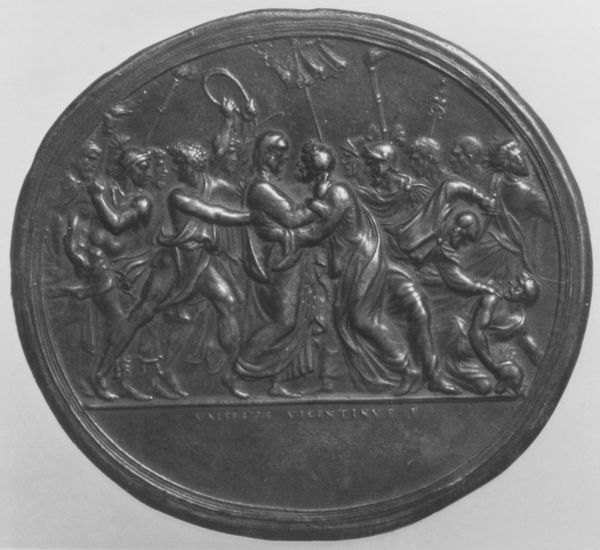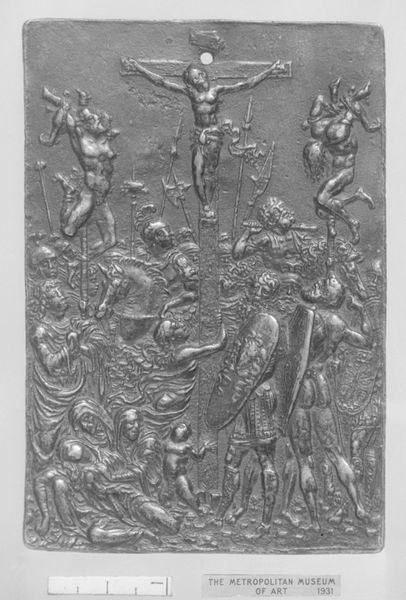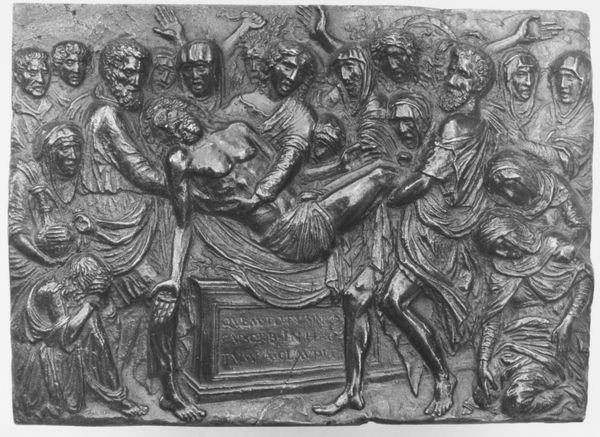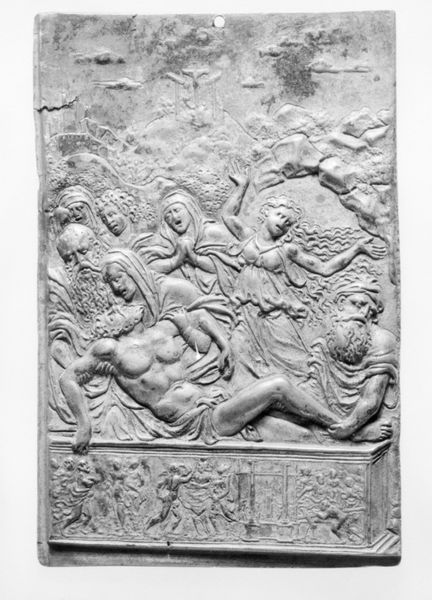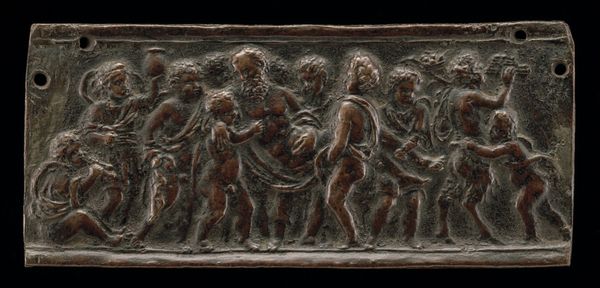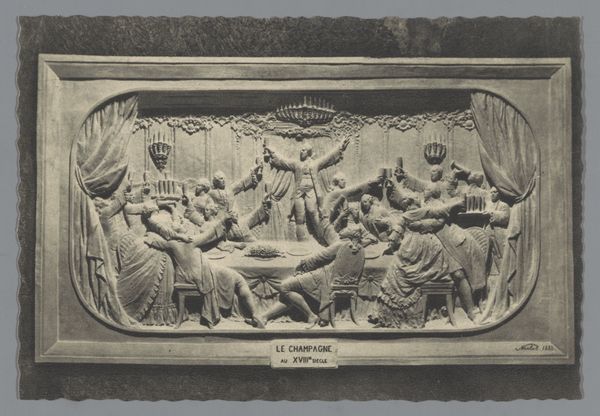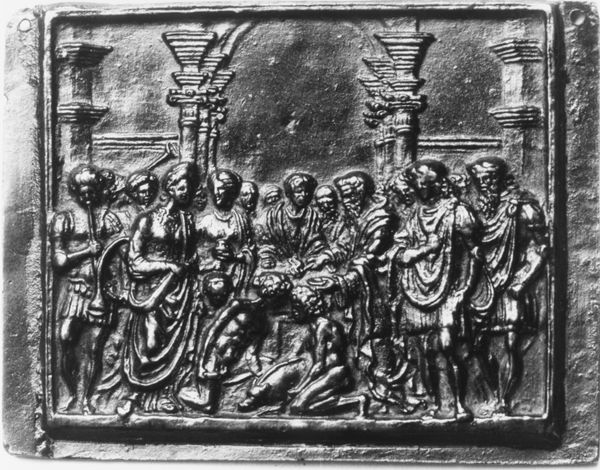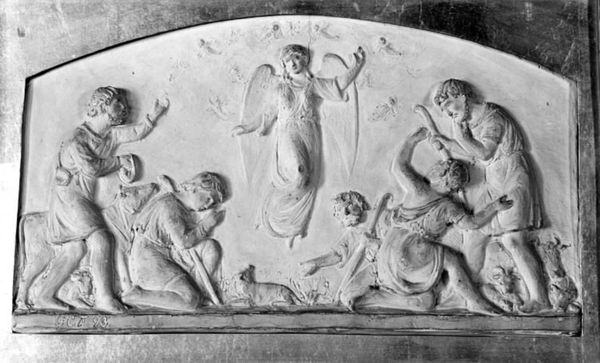
Allegory of Triumph and Sacrifice 1517 - 1523
0:00
0:00
relief, bronze, sculpture
#
allegory
#
animal
#
sculpture
#
relief
#
bronze
#
figuration
#
11_renaissance
#
female-nude
#
sculpture
#
history-painting
#
italian-renaissance
#
nude
#
male-nude
Dimensions: 7.6 x 10.3 cm, wt. 188.24 g.
Copyright: Public Domain
This bronze plaquette, "Allegory of Triumph and Sacrifice", was made by Andrea Briosco, called Riccio, in Italy, likely in the late 15th or early 16th century. It's a work of great complexity, bringing together classical and humanist themes in a way that reflects the intellectual ferment of the Renaissance. The imagery is fascinating. We see figures drawn from classical mythology, alongside what appears to be a sacrificial scene, alluding to ancient religious practices. The nude figures reference the Renaissance interest in classical sculpture, but also raise questions about the status of the body in Renaissance art. This image creates meaning through visual codes, cultural references, and historical associations. Italy at this time was seeing the rediscovery of classical texts and art and a transformation of social and political structures through intellectual ideas. Riccio seems to be commenting on the relationship between classical ideals, religious sacrifice, and humanist philosophy. Understanding this work fully requires us to delve into the intellectual and artistic contexts of Renaissance Italy, exploring the complex relationships between artists, patrons, and the classical world. The historian's task is to unpack these layers of meaning, drawing on a range of sources to illuminate the cultural significance of this small but powerful object.
Comments
No comments
Be the first to comment and join the conversation on the ultimate creative platform.
